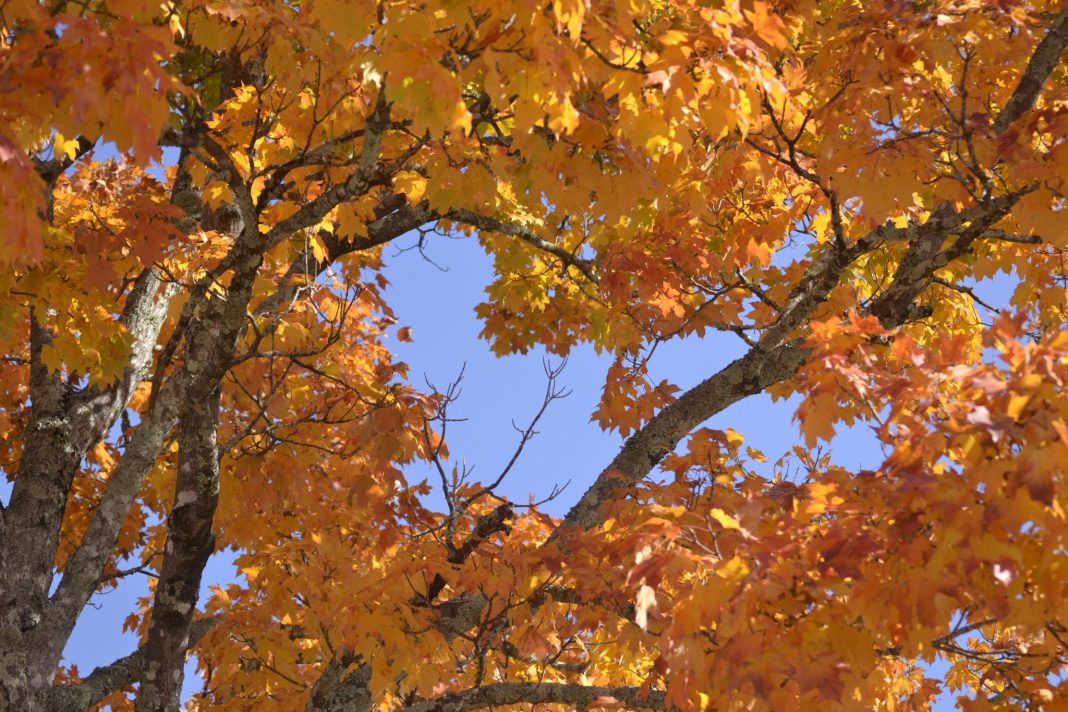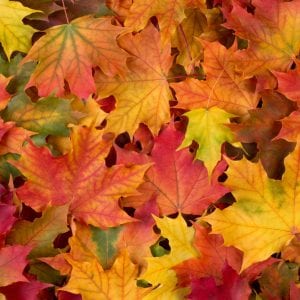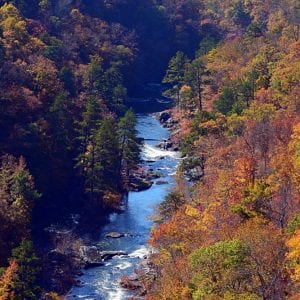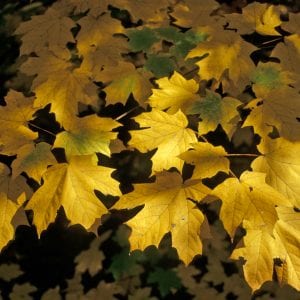AUBURN UNIVERSITY, Ala. – Crisp, cool mornings and long shadows signal that fall has truly set in. With a transition into cooler weather, comes a transition with the vibrant colors of fall leaves. Often it seems as if this change happened over night. This phenomenon strikes the question, what triggers this transition to the striking shades of red, yellow, orange or even purple?
Yellow Leaves
First, let’s begin with the yellow leaves that people see in the fall. To understand the transition from green to yellow, we must first understand where the leaf began.
Mallory Kelley, an Alabama Extension home grounds regional agent, said in the spring and summer, the green color seen in leaves is chlorophyll.
“Photosynthesis, the food-making process in the plant, takes place in the green chlorophyll-containing leaves,” Kelley said. “As day length begins to shorten, so does the amount of sun available to the leaves. Therefore, the living plant cells in leaves do not receive enough light to create food and begin to change color.”
While temperatures and daylight hours continue to decline, the chlorophyll begins to break down, allowing the yellow color to show through. This yellow color has actually been in the leaf all along, it has just been covered by the chlorophyll. Eventually they will die and fall to the ground.
“The initial plant that tells me fall is here is the terribly invasive popcorn tree,” Kelley said. “You will start to notice them along fence rows and out in pastures along the roadsides.”
Even though the yellow color change can seem like a magical overnight phenomenon, it is simply a chemical process causing the breakdown of chlorophyll.
Red, Orange and Purple Leaves
If yellow leaves are caused from chlorophyll breaking down, then how do leaves form the striking red, orange or even purple shades? Surprisingly, these radiant colors started as yellow leaves as well, but they transition to other shades because of temperature changes.
Kelley said warm sunny days with cool night temperatures, especially below 45 degrees, will give leaves these extravagant shades.
“These day and night temperatures tend to raise the level of red coloration,” Kelley said.
The cool night temperatures trap the sugars produced during the warm sunny day inside the leaves, producing the array of fall colors. Certain tree species will only show certain colored leaves.
“Sugar maples take on a fiery orange color, hickories will only show yellow colors, while oaks are primarily reddish brown to a brown shade,” she said.
More Information
No fall leaf colors are the same. They can vary tree to tree based on factors like physical location or even genetics. Colors can even vary on the same tree. For instance, leaves that are directly exposed to the afternoon sun may turn a bright red while leaves on the shady side of the tree may only turn yellow.
With every year comes a different array of these striking fall colors. One thing remains constant; it is a phenomenon that brings about a special joy for folks of every age to cherish.
Alabama.Travel has a list of some of the best places to see the Alabama fall leaf color. The website also has a chart that displays the peak fall color for each area of the state.




















